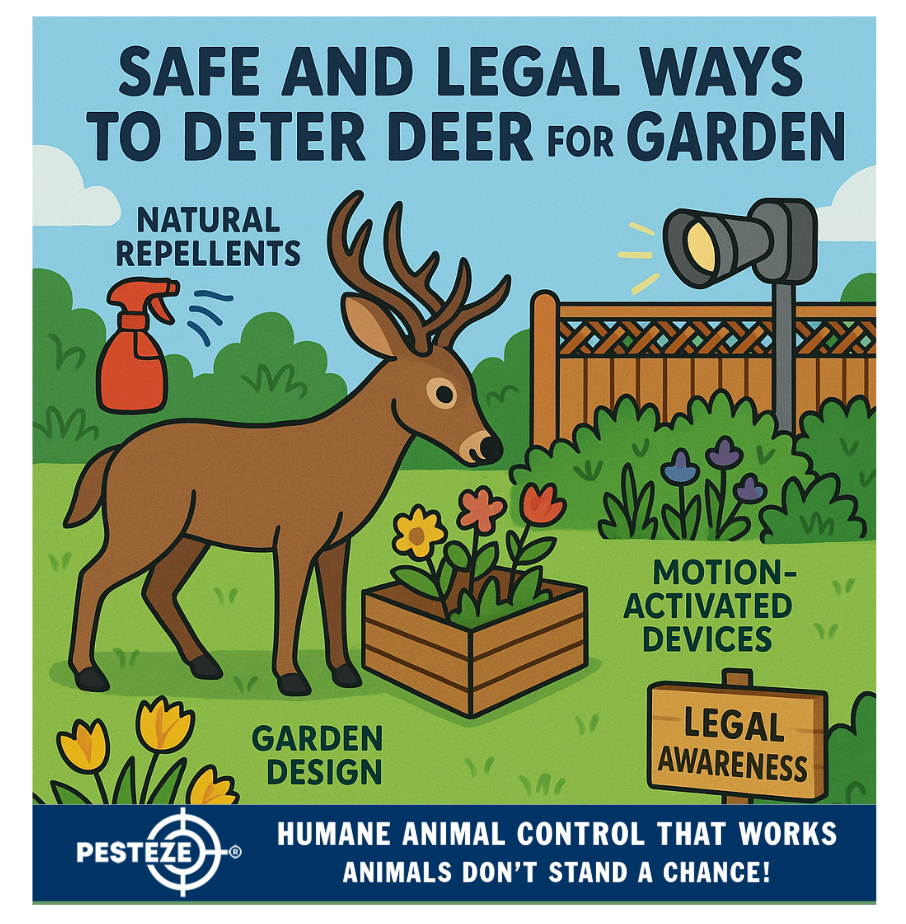SAFE AND LEGAL WAYS TO DETER DEER FROM YOUR GARDEN

SAFE AND LEGAL WAYS TO DETER DEER FROM YOUR GARDEN
SUMMARY
This guide provides humane, safe, and legal strategies for keeping deer out of your garden. It covers natural repellents, fencing options, and environmental modifications to protect your plants while respecting local wildlife laws and maintaining ecological balance.
FEATURES
-
Natural Repellents: Use scent and taste deterrents made from safe ingredients.
-
Physical Barriers: Install fencing or mesh to prevent deer access.
-
Garden Design Strategies: Incorporate deer-resistant plants and layouts.
-
Motion-Activated Devices: Scare deer away with light or sound.
-
Legal Awareness: Follow wildlife protection and deterrent regulations.
-
Seasonal Maintenance: Adjust deterrent methods as deer behavior changes.
GUIDE DESCRIPTION
Deer are beautiful creatures, but they can quickly become a gardener’s worst nightmare. A single visit from a hungry herd can devastate flowerbeds, vegetable plots, and young trees. While it may be tempting to seek extreme solutions, the most effective approaches are those that are humane, safe, and legal. Protecting your garden from deer is about prevention and consistency, not harm.
Start by using natural repellents. Deer have an acute sense of smell, so odors like garlic, peppermint, predator urine, or vinegar can deter them. You can also make homemade sprays using eggs, soap, or essential oils mixed with water and sprayed on plants every few days. Commercial repellents are also available and often combine unpleasant scents and tastes to condition deer to avoid your garden. Be sure to reapply after rain and rotate products occasionally to prevent deer from adapting.
Physical barriers are among the most reliable deterrents. A tall fence—at least 8 feet high—is generally the most effective solution, as deer are excellent jumpers. If a tall fence isn’t possible, double-layer fencing can confuse them; place two shorter fences about three to four feet apart. Netting and chicken wire can also protect smaller areas or individual plants. For a less intrusive option, install motion-activated sprinklers or lights that startle deer and condition them to stay away.
Your garden design can also discourage deer naturally. Choose plants with strong scents, fuzzy textures, or bitter flavors—lavender, rosemary, sage, marigold, and daffodils are great examples. Planting these around the perimeter of your garden can act as a natural barrier. Keeping the area well-lit and free of dense shrubs also reduces hiding spots, making your yard less inviting.
Always stay within legal limits when deterring wildlife. Harmful traps, poisons, and electric fencing can violate local or state wildlife protection laws. Check your area’s regulations before applying repellents or installing fencing that might affect local fauna. Wildlife agencies often offer free advice on legal deterrent methods.
Finally, practice seasonal adjustments. Deer behavior changes throughout the year—especially during breeding and food-scarce seasons—so refresh repellents and inspect barriers regularly.
By combining sensory deterrents, thoughtful landscaping, and lawful prevention strategies, you can maintain a thriving garden without harming deer or breaking regulations. A consistent, compassionate approach ensures both your plants and the local wildlife coexist peacefully.
- Saneeth Thota


Comments 0